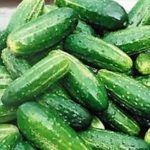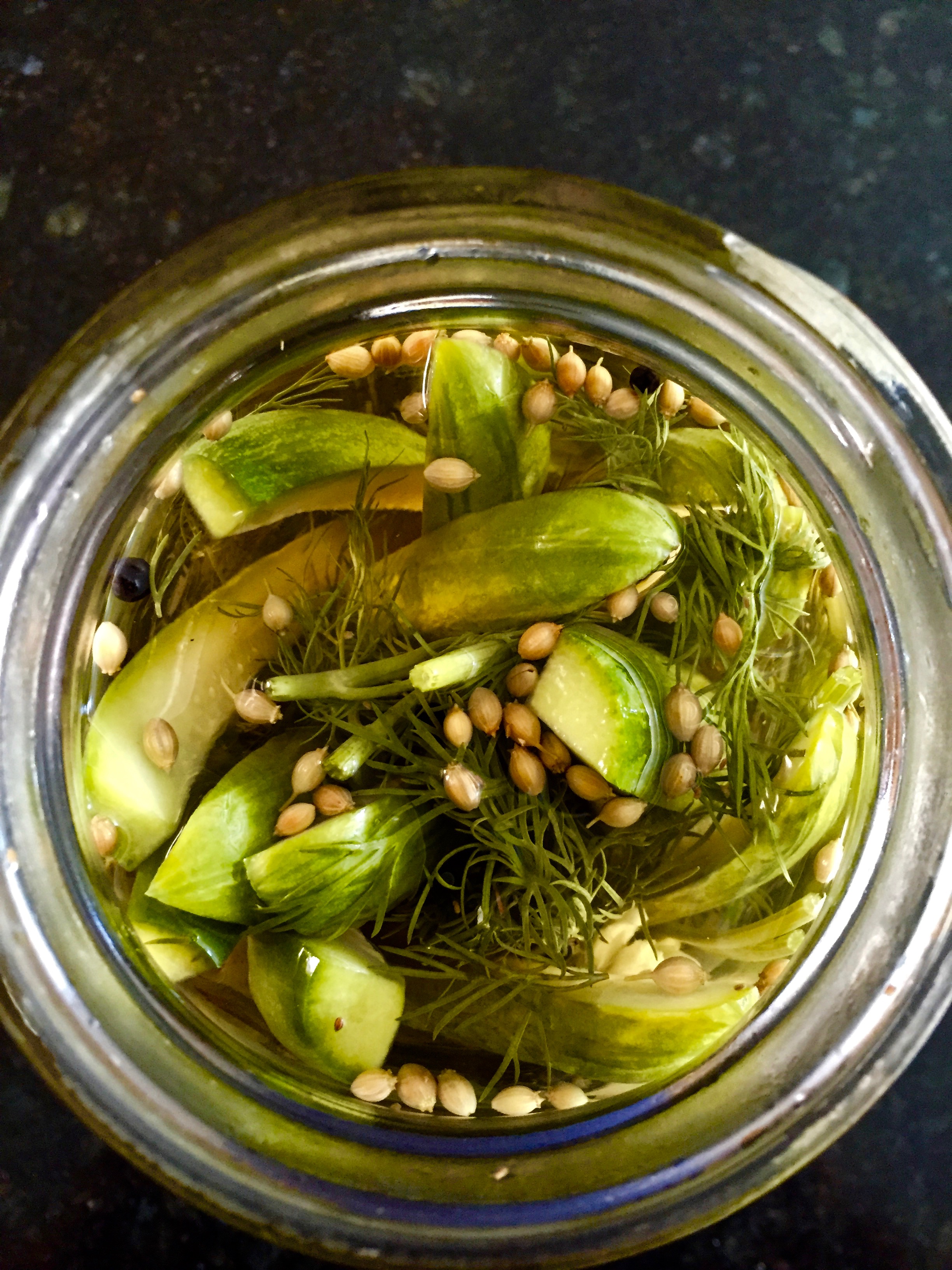I’ve always been a huge fan of pickles, and you can make quick and easy dill pickles yourself in about 10 minutes of prep time. I myself am a huge fan of dill pickles…the tart but delicious, crunchy but forgiving, salty but not too briny. But there are as many ways to pickle as there are days in a year. The primary recipe I’m going to share with you today is for my dill pickles….they take all of about 10 minutes to make (and need 2-3 days to pickle properly), but I’ll throw in a few extra tips too.
Whit’s Dill Pickles
These are a perfect balance of salty, sour and sweet. Not nearly as sweet as a bread’n’butter pickle, but sweeter than a New York deli-style pickle (which are usually fermented in brine and made without vinegar and allowed to ferment to turn them sour). This method is called refrigerator pickling. It does not require boiling or fermenting.

1 1/2 cups distilled white vinegar
3/4 cup water
1/4 cup kosher salt
1/4 cup sugar
4-5 pickling cucumbers (they are typically about 4-5″ in length or the height of you pickle jar!), cut vertically in halves or quarters
5-6 large sprigs of fresh dill weed
5 whole garlic cloves, lightly smashed and peeled
2 tsp black peppercorns
2 tsp coriander seed
In a sauce pan, combine the vinegar, water, salt and sugar. Stir over medium high heat just until the salt and sugar are dissolved (no need to bring it to a boil). Set aside to cool.
In a clean, tall glass jar (that holds 20-32 ounces), put 2 or 3 of the dill sprigs (fold them if needed to fit) in the jar. Put the garlic cloves in the bottom, then put the cucumber spears in the jar until full but not tightly packed, inserting them so that dill sprigs are between them. Put the remaining dill sprigs in between the spears, then add the peppercorns and coriander seed to the top. When the pickling liquid is cool or at most warm to the touch (not hot), pour it into the jar over the cucumbers, until cucumbers are covered completely. (If you have a much larger jar, you will need more liquid in the same proportions; if a smaller jar, you can either make a smaller batch of liquid, or just discard what you don’t use.)
Affix the lid to the jar, and gently turn the jar back and forth to distribute the liquid and spices. Place in the fridge and allow to marinate for a couple of days before fully enjoying.
This method of refrigerator pickling can be used for just about any vegetable (carrot, okra, green beans, radish, etc.). In the case of very hard vegetables, like carrots or even green beans, you’ll want to blanch them first, then shock them in ice water to stop the cooking, so that the final result is more tender.
NOTE: You can vary this recipe any way you like! Add dried red chili pepper or chili flakes for a bit of spice. Change the proportions of salt and sugar to suit your palate. Add different herbs. Pickle them whole or in slices. This is really just meant to be a base from which you can play. Please share your favorite recipe!
Quick pickling is also an excellent tip to have on hand. Perhaps you want pickled shallots for a salad you’re making. Or you want to pickle a combo of radish, carrot and cucumber matchsticks for a banh mi sandwich. You can make these quick pickles and have them ready to use in about 20 minutes. Put a small amount of water in a bowl (about 1/2 cup), add a Tbsp of white vinegar or cider vinegar, and a tsp each of salt and sugar. Stir, add your vegetables or shallots, and let sit for 20 min. Voila! You have quick pickled veggies ready to use.
Bon appétit!


Whit, is there actually a flavour difference with Kosha Salt or can I use something like Malden?
Maldon salt is really a finishing salt, meant to be sprinkled on foods as an accent when serving. It gives flavor and texture due to it’s large flake consistency. And you pay quite a lot for it as a result. So while you CAN use it in cooking, it dissolves in foods and sauces, and you lose that texture component (and you’ll burn through an expensive product). Kosher salt, on the other hand, is readily available and inexpensive. And the results won’t taste different, so the cheaper product is the way to go. Hope that helps!